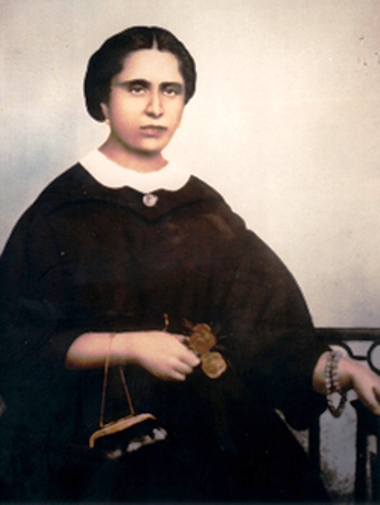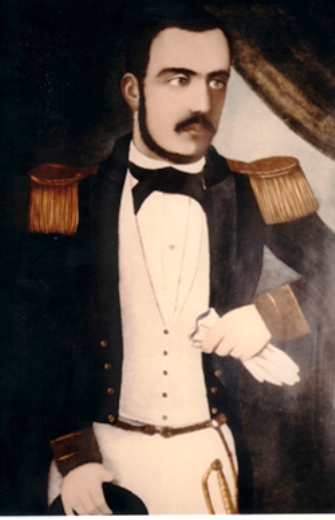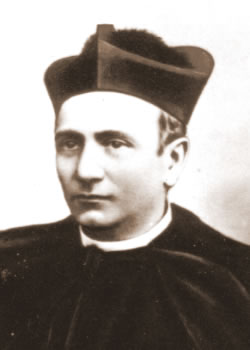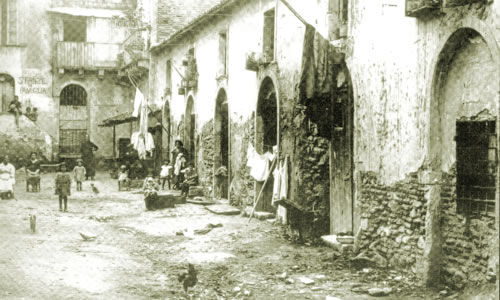Saint Hannibal Mary Di Francia
(1851-1927) (sometimes written as Annibale Maria Di Francia)
Hannibal Mary Di Francia was born in Messina, Italy, on July 5, 1851. His father Francis was a knight, the Marquises of St. Catherine of Jonio, Papal Vice-Consul and Honorary Captain of the Navy. His mother, Anna Toscano, also belonged to an aristocratic family. The third of four children, he lost his father when he was only fifteen months old. The sad experience of losing a parent made him deeply sensitive to the plight of children bereft of parents and this, influenced his life and his educational system.
In childhood he developed such love for the
Eucharist that he was allowed to receive Communion daily, something quite exceptional in those days. He was only seventeen when, at prayer in front of the Blessed Sacrament, he was given the “revelation of Rogate”, that is, he deeply felt that vocations in the Church come only through prayer. Subsequently he found that such prayer is commanded by Jesus in the Gospel when He says: “Ask [Rogate] the Lord of the harvest to send out laborers to gather his harvest” (Mt 9:38; Lk 10:2). These words became the fundamental insight to which he dedicated his entire life.
Hannibal proved to be of lively intelligence with remarkable literary abilities. As soon as he felt the call of God, he immediately responded by placing himself and his talents at the service of God. After his theological studies, he was ordained a priest on March 16, 1878. A few months before his ordination, he met an almost blind beggar, Francesco Zancone, a providential encounter which led him to discover the sad social and moral reality of one of the poorest neighborhoods in the outskirts of Messina (Case Avignone). It was the beginning of a long walk and his boundless love for the poor and the orphans was one of the primary characteristic of his life.
With the permission and the encouragement of his bishop, Msgr. Joseph Guarino, he made the Avignone ghetto his home and dedicated himself completely to the redemption of its inhabitants. In accordance with the Gospel, he saw them as “sheep without a shepherd”. It was an experience strongly marked by misunderstandings, difficulties and obstacles of every kind which he overcame by great faith, seeing Jesus Christ in the poor and marginalized people. He was carrying out what he defined as the “spirit of a twofold charity: the evangelization of and the care for the poor”. In 1882 he started his orphanages, which were called “Anthonian Orphanages” because they were placed under the patronage of St. Anthony of Padua. His concern was not only to provide the children with food and occupation, but above all to assure that they were brought up in a way that integrated the moral and religious aspects of their lives, offering a family climate which helped lead them to discover and follow God’s plan for them.
With his missionary spirit he wanted to reach out to the orphans and the poor all over the world. But how could he do it? He perceived that the “Rogate” was the real answer. He wrote: “What are these few orphans we attend to, these few people we bring the good news to, compared to the millions who are lost and abandoned as sheep without a shepherd?… I looked for an answer and I found a complete one in the words of Jesus: ‘Ask the Lord of the harvest to send out laborers to gather his harvest’. I concluded then that I had found the secret key to all good works and to the salvation of all souls”.
Hannibal felt that the Rogate was not simply the Lord’s recommendation, but an explicit command and an “infallible remedy”. For this reason, his charism can be considered as giving life to a providential foundation in the Church. He was also a forerunner in considering the work of committed lay persons, like parents, teachers, and even good government workers, as vocations.
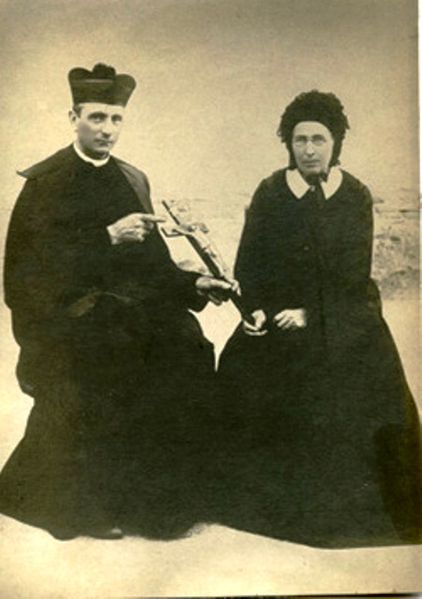
St. Hannibal, pictured here with Françoise Mélanie Calvat, one of the seers of Our Lady of La Salette.
To carry out his apostolic ideals in the Church and in the world, he founded two religious Congregations: the Daughters of Divine Zeal, in 1887, and the Rogationists ten years later. He wanted both institutions to live the Rogate as a fourth vow. The institutions were canonically approved on August 6, 1926.
In a petition to St. Pius X, in 1909, Father Hannibal stated: “From my early youth I have committed myself to that Holy Word of the Gospel: ‘Rogate ergo…’ From my small Institutes an unceasing daily prayer is raised by the orphans, the poor, the priests and the consecrated virgins, to the most Sacred Hearts of Jesus and Mary, to St. Joseph and the Apostles, that they may abundantly provide the Church with holy and chosen priests and with evangelical workers for the spiritual harvest of souls”.
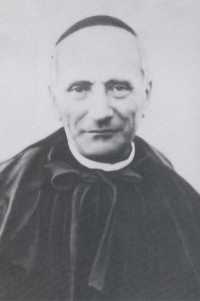 To spread the prayer for vocations he promoted several initiatives: he had personal epistolary contacts with the Popes of his time, he instituted a “Holy Alliance”, a movement of prayer for vocations intended for the clergy, and the “Pious Union of the Evangelical Rogation” for all the faithful. He published the periodical “God and Neighbor”, to involve everyone in these ideals.
To spread the prayer for vocations he promoted several initiatives: he had personal epistolary contacts with the Popes of his time, he instituted a “Holy Alliance”, a movement of prayer for vocations intended for the clergy, and the “Pious Union of the Evangelical Rogation” for all the faithful. He published the periodical “God and Neighbor”, to involve everyone in these ideals.
“The entire Church must formally pray for this aim,” he wrote, “because the purpose of the prayer to gain vocations must concern all the faithful, every Christian who has at heart the good of souls and, in a particular way, the Bishops who are the shepherds of the spiritual flock and to whom souls are entrusted. They are the living Apostles of Jesus Christ today.” 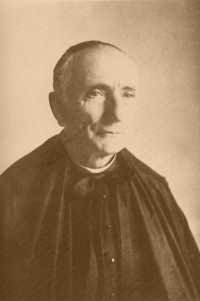 The annual World Day of Prayer for Vocations instituted by Pope Paul VI in 1964 can be considered a response to his intuition.
The annual World Day of Prayer for Vocations instituted by Pope Paul VI in 1964 can be considered a response to his intuition.
His love for the priesthood was great. He strongly believed that the world could be redeemed only through the work of many holy priests. That is why he was deeply concerned with the spiritual formation of the seminarians entrusted to him by the Bishop of Messina. He used to say that without a lot of prayer and a solid spiritual training, “all the efforts of bishops and of seminary educators would only result in artificial priests”. He strove to become himself a model of the “good laborer” of the Gospels, and to be a priest according the Heart of Jesus. His charity knew no bounds, and was directed towards all kinds of people in need, including priests facing difficulties and cloistered nuns.
Even when he was still alive, his reputation as a saint was widespread on all levels. When he died in Messina, on June 1st, 1927, people began to say: “Let us go to see the sleeping saint”. He died comforted by the vision of the Blessed Virgin Mary, whom he had loved so much during his life.
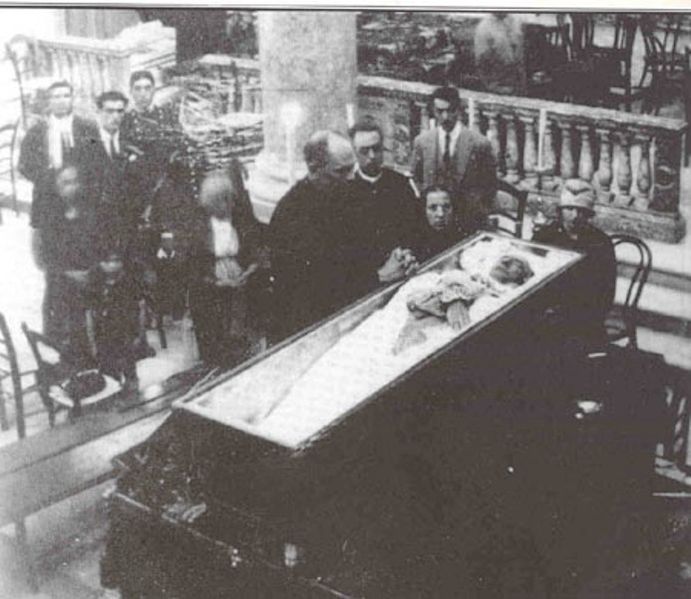
The funeral of St. Hannibal. His incorrupt body rests in the Basilica-Santuario del Sacro Cuore di Gesù e di S. Antonio in Messina.
His funeral, according to the chronicles and pictures in the newspapers of that time, became a triumph. Civil authorities promptly granted permission for his burial in the Shrine of the “Evangelical Rogation” which Fr. Hannibal himself had built in Messina and wanted to be dedicated to the command of the Gospel: “Ask, therefore, the Lord of the Harvest to send workers into his harvest…”.
The religious families founded by Saint Hannibal are currently present on all the continents. According to the ideals of their founder, they dedicate themselves to spreading the prayer for vocations through centers for vocations, publishing houses and printing presses, institutions for orphans and abandoned children, schools for deaf and mute, nutritional centers, homes for aged, homes for single mothers, and professional and vocational schools.
 The sanctity and mission of Fr. Hannibal as an “outstanding Apostle of the prayer for vocations” are deeply felt in our time by all who are concerned with the need for vocations in the Church. John Paul II proclaimed Father Hannibal a Blessed on October 7, 1990 and defined him as the “authentic forerunner and zealous master of the modern pastoral care for vocations”.
The sanctity and mission of Fr. Hannibal as an “outstanding Apostle of the prayer for vocations” are deeply felt in our time by all who are concerned with the need for vocations in the Church. John Paul II proclaimed Father Hannibal a Blessed on October 7, 1990 and defined him as the “authentic forerunner and zealous master of the modern pastoral care for vocations”.
(source: Vatican)
He was canonized on May 16, 2004.
Nobility.org Editorial Comment: —
“Ask, therefore, the Lord of the Harvest to send workers into his harvest…” (Matt. 9:38).
St. Hannibal made these words of Our Lord the guiding beacon of his life’s work, founding two religious congregations focused on promoting religious vocations.
However, considering his aristocratic birth, would it not be equally appropriate to ask for harvest workers laboring for God among the nobility and analogous traditional elites? Truly, we need religious vocations, especially today, with the Church under siege and the faith imperiled in millions of souls. However, we also need members of the nobility and analogous traditional elites to labor as lay apostles in temporal society, leading by example, and encouraging millions to legal and peaceful action in the Cultural War that is destroying Christian civilization.
